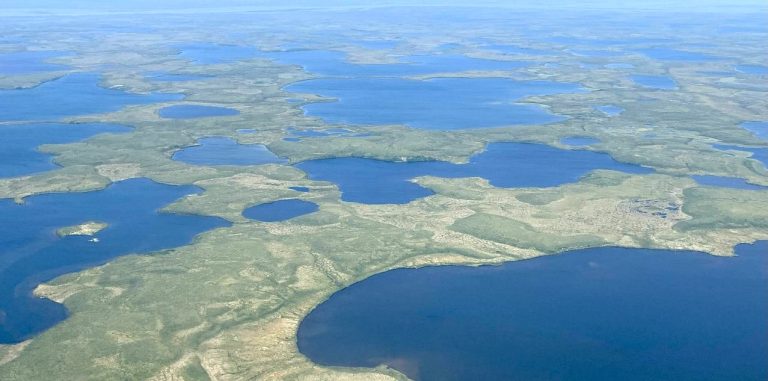
Germany's Klimanachrichten here presents peer-reviewed climate science showing that permafrost is not the tipping point we need to worry about. [emphasis, links added]
Here's what's reported in the video:
Permafrost stores large amounts of carbon dioxide and is often described as a key tipping factor in the Earth system that suddenly collapses on a global scale when global warming reaches a certain level.
However, the idea that the time bomb initially behaves fairly quietly and only ignites at a certain threshold of warming is controversial among researchers.
According to scientific data, this is not true, as an international team of researchers led by the Alfred Wegener Institute has now proven.
According to the study, there is not one specific global climate tipping point, but rather many local and regional tipping points that “ignite” at different times, accumulate over time, and cause permafrost to melt as climate changes .
Permafrost covers about a quarter of the Northern Hemisphere's land area and stores large amounts of organic carbon in the form of dead plant remains. These will not break down when frozen.
Only when permafrost melts do microorganisms become active and release large amounts of carbon into the atmosphere in the form of carbon dioxide and methane. Rising global temperatures could therefore activate these vast reservoirs and significantly exacerbate climate change through additional emissions.
In public debates there is recurring talk of a “ticking carbon time bomb”. This is based on the assumption that permafrost, like the Greenland ice sheet, is one of several tilting factors in the Earth system.
According to this, permafrost will initially disappear slowly during global warming. Only when a critical threshold is exceeded will the melting process suddenly intensify and rapid, irreversible global permafrost collapse begin.
Although this thaw is often suspected, It is not yet possible to clarify whether such a threshold actually exists and at what temperature it can be exceeded.
An international research team led by Jan Nitzbon from the Alfred Wegener Institute of the Helmholtz Center for Polar and Marine Research (AWI) has now finally solved this problem.
AWI researchers explain:
“Actually, Describing permafrost as a global tilting factor is controversial in research. The Intergovernmental Panel on Climate Change (IPCC) also pointed out this ambiguity in its latest assessment report. We hope to close this knowledge gap.
“In our study, we compiled the existing scientific literature on processes that influence and accelerate permafrost thawing.
“On the basis of our own data analysis, we evaluated all current findings on thawing processes to determine whether and at what spatial scale (local, regional, global) they could lead to self-sustaining thawing and thus at a specific time to reach the 'critical point'.
The research results clearly show that there are Self-reinforcing, partially irreversible geological, hydrological and physical processes that have only local or regional effects.
One example is the formation of so-called thermokarst lakes. This involves ice in permafrost soil melting and then sinking. Meltwater collects on the surface, forming a dark lake that absorbs large amounts of solar energy.
This further increases the warming of the permafrost beneath the lake and creates a self-sustaining dew process in the area surrounding the lake.
Similar amplified feedbacks have been found in other processes associated with permafrost, such as the loss of boreal forests due to fire, but here again only on a local to regional scale.
There is no evidence that self-reinforcing internal processes simultaneously affect the entire permafrost beyond a certain level of global warming and accelerate global melting.
Even estimated emissions of greenhouse gases will not lead to a leap in global warming by at least the end of the century. It is therefore misleading to describe permafrost as a global tilting factor.
The research was published in the journal “Nature·Climate Change” in June 2024.
Above: Aerial view of permafrost in northwestern Canada (Photo: Alfred Wegener Institute/Guido)
Read more in the Trick-Free Zone
